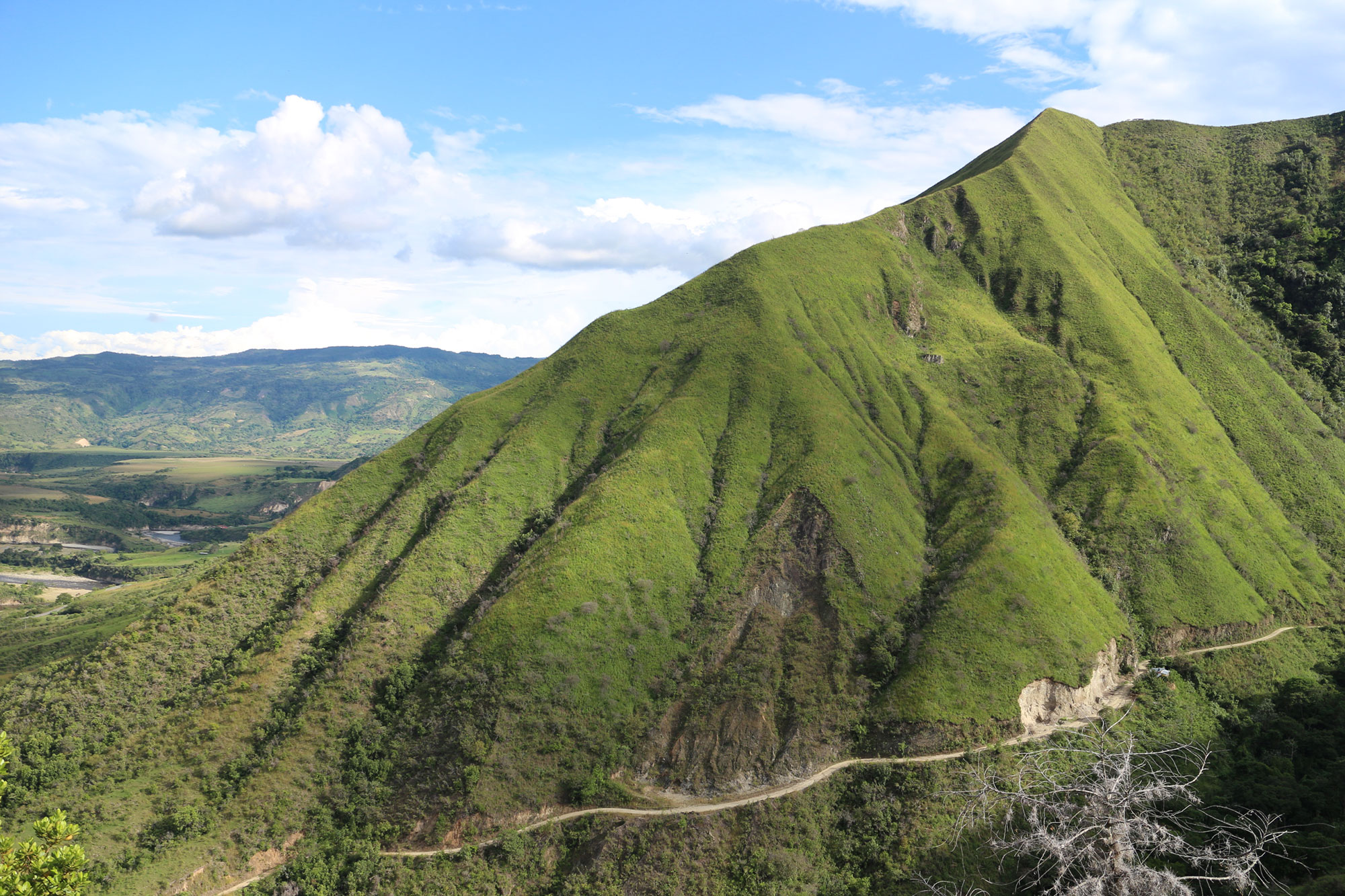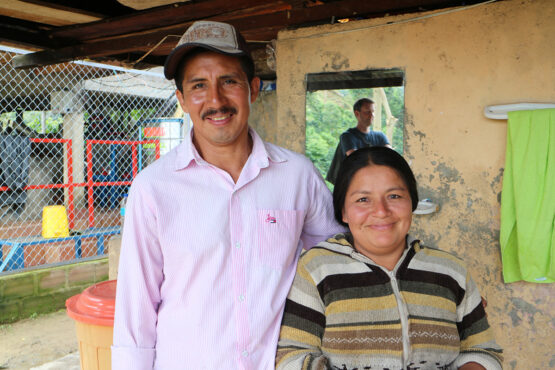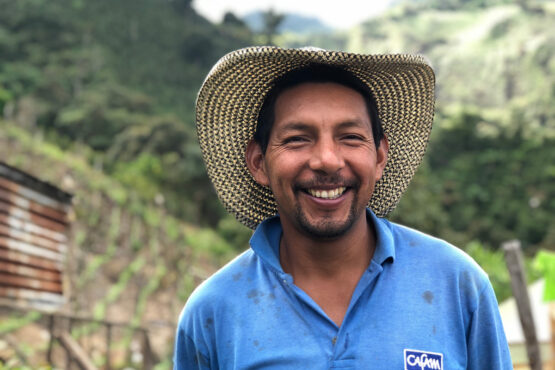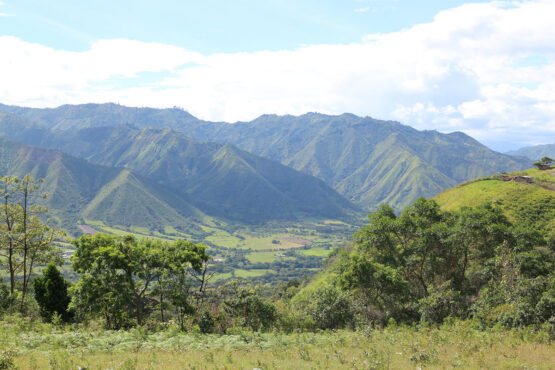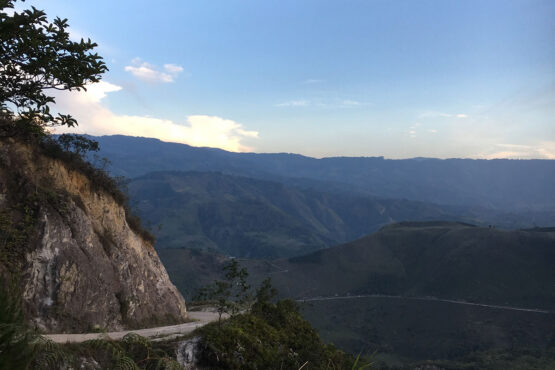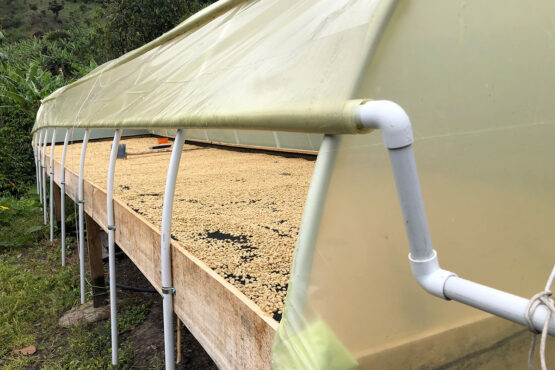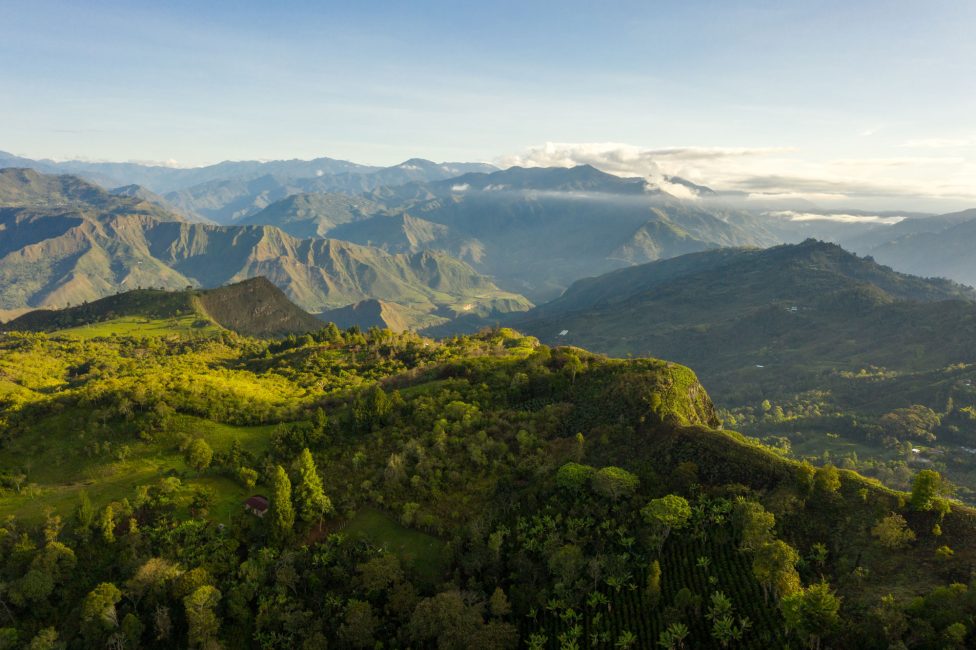Small Producers of San Francisco
Bright and vibrant, with honey blossom and vanilla florals. Pineapple, green apple and lemon lime acidity, with great clarity and length.
This lot comes from a group of 6 smallholder producers, led by Gabriel Quilindo, who grow coffee in the community of San Francisco. Located in the municipality of La Plata, in the state of Huila, Colombia the region is found at a staggering elevation of 1,900-2,100m above sea level. San Francisco is a steep, narrow stretch of land that borders the town of Inza, in the state of Cauca, and forms part of the Macizo Colombiano (‘Great Colombian Massif’). Much like that found in these well-known coffee regions, the volcanic soil in San Francisco is perfect for coffee growing. Farmers here also benefit from year-round cool temperatures, abundant access to clean water, and almost exclusively produce coffee from older Caturra trees in plots of land under 2 hectares in size.
The municipality of La Plata has a long history of coffee-growing and agriculture. Along with coffee, the region is known for growing rice, plantain and cacao and for its rich biodiversity. For decades, the centre of town has served as the hub for the local coffee cherry market, as farmers from nearby Inza, Paez and Rio Chiquito (all around 90-minute drives away) would sell their crop here to domestic coffee traders. Recognising the benefits of having a strong presence in town, our friends at Pergamino (our supply partners in Colombia) established a collection point in La Plata and began investing in and training farmers in the municipality and nearby towns.
Today, operations at La Plata are managed by Felipe Henao, whose brother Leonardo is the Head of Quality Control and Logistics at Pergamino. Felipe has spent many years being Pergamino’s “boots on the ground,” giving him the opportunity to learn the intricacies of the different growing regions. By working side-by-side with many producers, Felipe has also been able to establish meaningful, long-term relationships across the Colombian countryside. This experience made him the ideal point person at La Plata, as the role requires him to be in constant communication with Pergamino’s HQ in Medellin, while making complex purchasing decisions and handling logistics on the field.
This is the first time we have sourced coffee from this community, but we are incredibly excited about its potential. The team at Pergamino tell us the region is difficult to reach, as the hills are sharp and the highway that leads to the centre of town becomes practically impossible to traverse during winter. Their efforts pay off on the cupping table though, as this lot consistently shows a unique vibrancy and clarity.
La Plata is the traditional home of the Yalcón and Nasa (or Páez) people. While few Yalcón communities survive today, the Nasa remain one of Colombia’s largest indigenous groups. During the Spanish invasion of Colombia, many of the Nasa were able to avoid bloodshed by escaping to the rugged hills and high plateaus of the Andes Mountains, where the Spaniards were unable to capture them. Today, the Nasa economy relies on agriculture, and society is organised into tight knit farming communities who distribute duties equitably under the guidance of cabildos, or locally elected councils. Like many indigenous groups across Latin America, the Nasa have spent decades lobbying for the return of their land rights, finding success in recent years. Their struggle has led to legal recognition of the fundamental rights of indigenous peoples, including recognition of the autonomy of their communal indigenous lands in the 1991 Colombian Constitution.
ABOUT HUILA
The department of Huila is located in the southwest of Colombia. It is framed by the Central and Eastern ranges of the Andes, with most of it sitting in the Magdalena Valley. This region is renowned for the quality of its coffee, and in 2013 it received the Denomination of Origin status. Coffee production in Huila belongs to an ecosystem of subtropical, very humid mountain forest. The year-round distribution of rainfall, rich soil and temperature allow exceptional coffee to be cultivated at elevations of up to 1,900 meters above sea level almost throughout the whole year.
Huila is one of the largest coffee-producing regions in the country, however the size of coffee farms is overwhelmingly small-scale, with most farmers owning on average just 1.5 hectares of land. Alongside coffee they also grow rice, raise cattle, and farm fish.
Our export partners for this coffee, Pergamino, have worked hard commercialise specialty-grade coffee throughout Huila, and have uncovered some stunning coffees and very dedicated producers in the process. They work closely with the producers to give them feedback on their coffees (provided by Pergamino’s expert team of cuppers) and provide top up payments when the coffee is sold at a higher premium.
Head here to learn more about the work of Pergamino.
HOW THIS COFFEE WAS PROCESSED
This coffee was processed using the washed method at each farm’s ‘micro-beneficio’ (mill). After being pulped using a small manual or electric pulper, coffee is placed into a fermentation tank, where it can spend anywhere between 48 and 72 hours. Because of the cooler climate in San Francisco, contributing producers tend to ferment their coffees for longer than usual, and some will often blend two days’ worth of pickings over the fermentation period. Coffee is then washed using cold, clean water.
Once rinsed, the wet parchment was carefully dried (over 10–18 days) on a raised bed with plastic over the top which protects the coffee from the rain and prevent condensation dripping back onto the drying beans. This bed has adjustable walls to help with air flow, and temperature control to ensure the coffee can dry slowly and evenly.
Once dry, the coffee was delivered to Pergamino’s warehouse, where it was cupped and graded, and then rested in parchment until it was ready for export.
